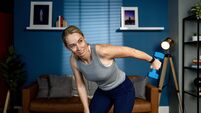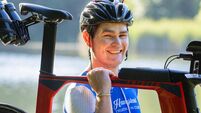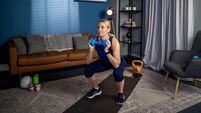Solo sporting: Team sports aren't the only way to stay fit
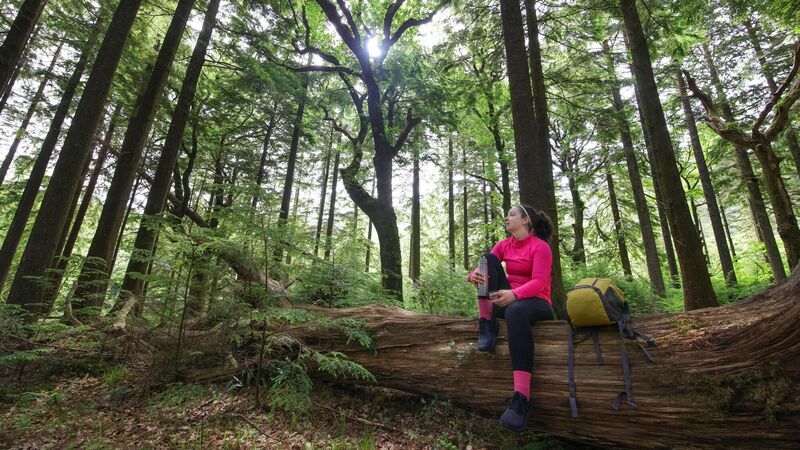
Emily Crowley, journalist, finding her love again of walking and jogging, in Killarney National Park. Photo: Valerie O'Sullivan
Every now and again, a time will roll around where a friend will be recruiting for members to join a team — be it for tag rugby, football, basketball, camogie or myriad other sports — and I can’t reject the offer quickly enough.
There is one particular scene that replays over and over in my head...
I was in secondary school, around third year, and our basketball coach was calling out the starting five team members, just minutes before throw-in. My name was among them.
“There must be some sort of mistake,” I remember thinking to myself, “I was only showing up to training to pass some time in the evening and to meet my friends — I’m not supposed to be playing ACTUAL game time, let alone starting.”
I can remember stepping on the court; my heart pounding, all saliva seemed to have vanished from my mouth.
We were to start our offensive attack with a drill we had practised a million times over in training, but anxiety got the better of me: I messed up the drill and lost our team the possession.
I — both figuratively and literally — dropped the ball. I was immediately subbed off.
What was worse was that I could tell my four teammates on the court were furious, though I doubt they ever think about that game as much as I do these days.
Emotions like that can stay with you for a lifetime. I can still feel the panic and disappointment, even now as I type these words, and I remember making a silent vow to myself that day to intentionally avoid ever getting any game time again. The coach, it seemed, made the same vow.
I avoided any type of sport for a long time after that. I avoided fitness and general health and wellbeing too, though that was less intentional.
It didn’t help my self-esteem growing up as the only girl of three, where my two brothers were actively involved in local GAA and soccer teams, and a father who trained and coached many of the Gaelic football teams at underage levels too.
Personal activity diminished, my waistline grew and I began to feel I was the friend on the periphery; relying on my sense of humour and good grades to gain me enough of a ‘likeability factor’ just get me through my secondary school career — all of which, in itself, is enough to make anyone feel a little self-conscious.
Those years at school can be pivotal in how one forms a relationship with movement. Michelle Galvin, a physical education teacher based in Kerry, explains that while PE classes are set out in six-week blocks (eg athletics or badminton for six weeks each), there are ways to
encourage participation among students in a block where the focus might be on a team sport.
“If, in the moment, the child isn’t participating in, let’s say a team sport like basketball, you’ll assign them a role,” she explains. “They can be ‘the referee’, and that can be their job for the six weeks, and if they really don’t like it after a couple of weeks, you could assign them the role to be ‘the coach’.”
She points out that because of these set six-week blocks, a teacher can’t get the student to play a solo sport while the class participates in the group activity because “then you’re excluding the child from the class, and it’s all about inclusion”.
She also says that oftentimes a student might have a note from a parent granting them permission to use the class to instead study another subject instead.
“That same child could be a total gym-goer or hiker, but won’t [like to participate] in school,” she says.
Galvin also points out that a dislike of participating in team sports is more common among female students than males. She also explains, however, that as part of senior cycle PE nowadays “contemporary issues in physical education” or “contemporary issues in sport” are taken into account that may influence whether males opt not to participate too.
It prompts teachers and coaches to ask ‘why is a child from a disadvantaged background not participating in sport?’ and take on board their opinions and emotions towards physical activities.
Nathan Gavigan, assistant professor in physical education in Dublin City University, explains that due to the Wellbeing Framework for Schools, the PE landscape in post-primary schools across Ireland has changed, and primary-level PE is also undergoing a reform.
This change is having an impact on how young people choose to interact with sport and activities.
Gavigan says: “PE as we know it is changing. It is moving away from the traditional focus on performance, and now has more of a physical literacy look to it. It’s more about giving young people an appreciation of physical activity and giving them the tools to be active for the rest of their life, whether that’s through team sports or individual activity.”
However, Gavigan says that games-based sports still remain the most popular in schools: “From my experience, individual sports like athletics, golf, badminton etc, are generally supported by many schools across the country.”
“The challenge with supporting so many sports in schools is that you need teachers to volunteer to give up their time to do that. They get nothing extra for giving up their time for school sport. With all the extra work and challenges they have already, it is hard to ask schools to be the solution to that question I feel.”
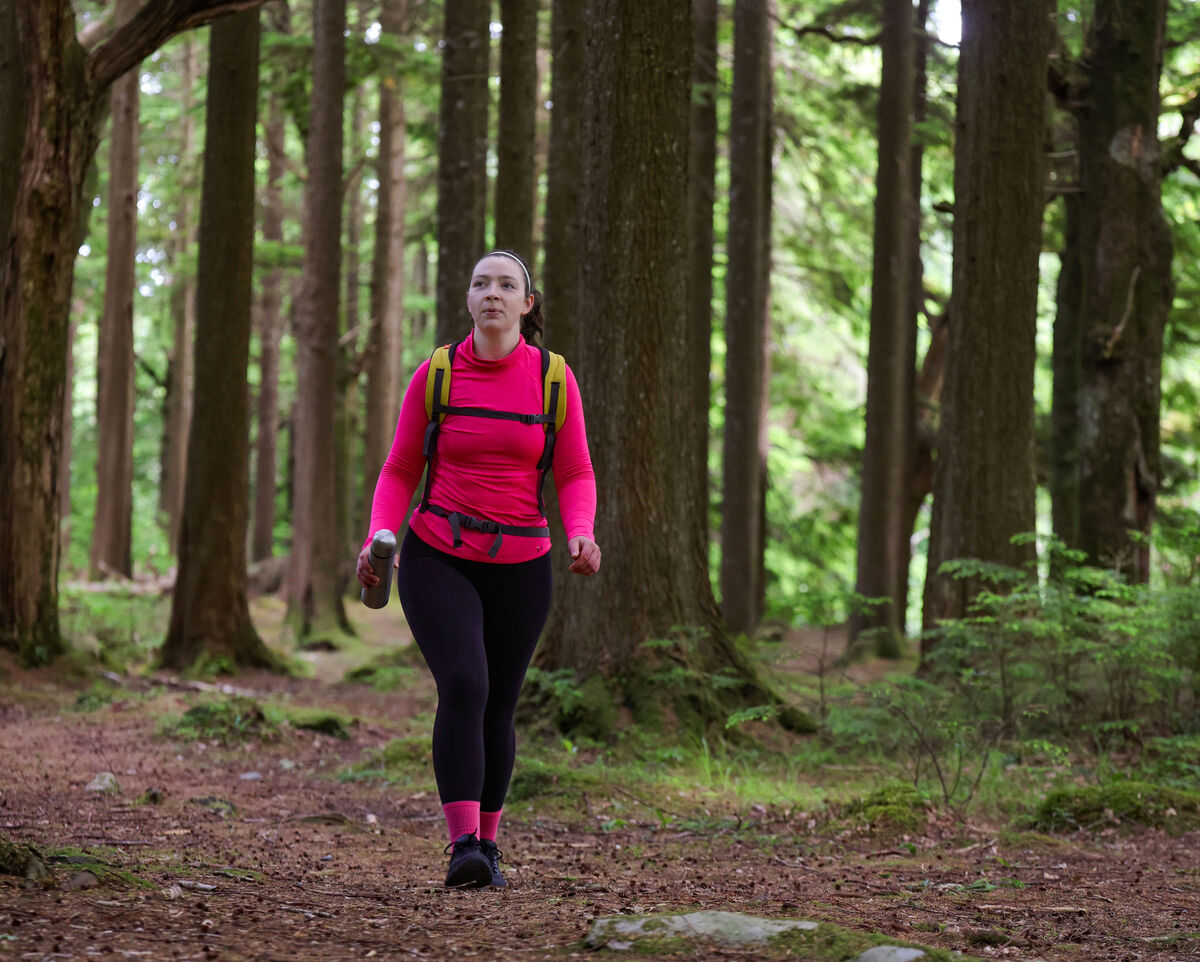
In my own case, it wasn’t until I survived those secondary school years that I began to explore more solitary ways to move. This movement took all different forms — from gym-work, to road running; from dips in the sea to hiking mountains.
We have to remember that, as a millennial, I was one of many girls who grew up when ‘heroin chic’ was deemed to be the beauty standard, and as a result, any type of physical exercise became a means in which to chase that standard.
However, I finally began to see sport and activities, not as punishment; not as an anxiety-inducing activity; and not as something I felt I had to do because everyone else was.
It was no longer something I did to try and chase the slender body frame I probably could never genetically achieve anyway. It was something I could do to enjoy, to see progress, and bit by bit, to better myself.
A quick discussion around the office would suggest hiking is the all-rounder individual sport. And it’s not surprising given the benefits behind it.
As well as the obvious benefits such as increased muscle and bone strength, improved balance, and cardiovascular benefits, the mere exposure to nature has physical advantages.
A study in the 1980s found that patients recovering from gallbladder surgery in a hospital room, with a window view of nature, had a quicker recovery time and a decrease in request for pain medication (Ulrich R. View through a window may influence recovery from surgery. Science. 1984;224:420-421).
Similarly, a separate piece of research sought to explain that exposure to “restorative environments” (ie, natural environments) can help people improve focus and mental health by resting directed attention (Kaplan S. The restorative benefits of nature: toward an integrative framework. J Environ Psychol).
Those familiar with the outdoors will understand that latter point. There is something about the mountains; the crisp air, the familiar smell of foliage, the scuffling sound of your boots as you trod along — it makes us forget our stresses and worries.
Summiting a peak can be a milestone achievement for some and a form of therapy for others. Watching a sunrise atop Torc mountain for me, above a sleepy Killarney, greeting a foraging stag while water flows over smooth slabs of rock — it triggers something visceral deep within me, it feels like home; but it’s a space for everyone.
Gavigan supports these points: “Solitary forms of exercise, such as hiking, offer numerous benefits that complement those provided by team sports. For example, solitary activities can be particularly effective in reducing stress, anxiety, and depression. They provide an opportunity for mindfulness and connection with nature.
He adds that they “encourage self-reliance, perseverance, and self-reflection”.
In solitary activities, it’s always going to be you versus you. It doesn’t matter how fast you go, what weight you lift, what size you are, what time you complete something in — every time you move, it’s an achievement.
A couple of months ago, I ran my first marathon. I didn’t care about what time I did it in, how I looked while running it (which, going by the pictures we were sent after, was eh… not great), or what other people thought.
To go from being the anxious teenage girl who thought she’d never be sporty, to being the girl that ran 42.2km is something I take a lot of pride in — not for any obnoxious reasons, but because it gives that anxious girl who felt she left her basketball team down a reason to be proud.
The fact of the matter is: Your body and your mind are the two things that you will spend your entire life with, you may as well treat them both with compassion and kindness to live a healthy and fulfilling life.
If, for you, that looks like battling it on the pitch with your teammates, if it looks like a quiet run down a country road, or even if it looks like a few steps out the back food in your own garden, embrace it.
As Gavigan puts it: “There are so many positives to participating in any physical activity.
“The key is doing what you enjoy.”
Hiking is a relatively easy concept: You start ascending and keep going until you reach the top.
However, depending on if a mountain has a trail or not, plus its level of difficulty and danger levels, you could consider a guided walking group to help you navigate unfamiliar territory.
Some companies offer mountain proficiency and navigation courses too, which will set you on the right path to surviving almost any type of hill. Kerry Climbing offers a range of these courses.
Gyms such as a CrossFit box or Hyrox gym give you the best of both worlds: You are in a group setting but each individual is focused on their own progress, so if you like to socialise as you move, it might be worth checking one of those out.
If you are looking to start running, the right pair of shoes is the minimum investment.
Many shops will offer a gait analysis and help you choose the right footwear. This will help prevent potential injuries in the long term.
Take a look at some adventure races such as the Dingle Adventure Race or any of the Quest series.
The different course length options cater for different fitness levels, and having an event in the diary could encourage you to get out in the fresh air for what’s left of our summer. While the results are individual, you could try getting a pal to tag along with you.

Celebrating 25 years of health and wellbeing




